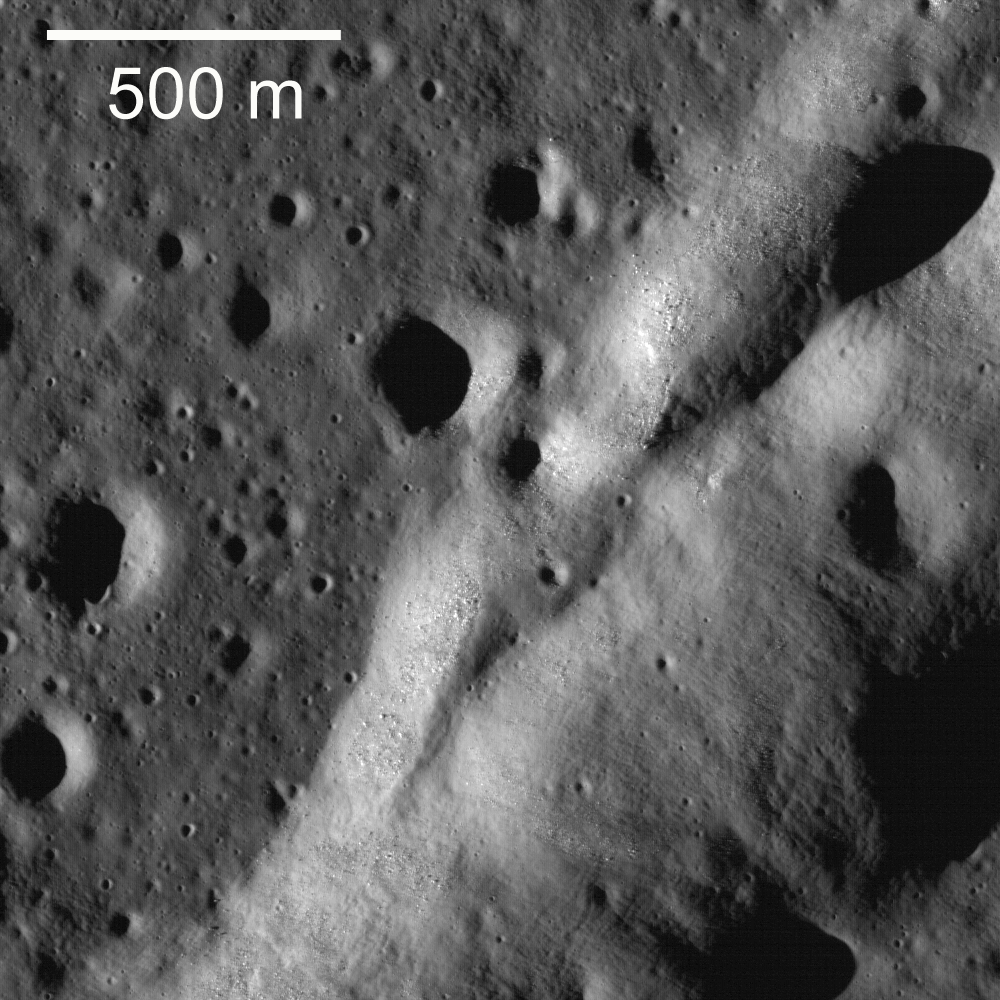
Wrinkle ridges are relatively common on the Moon and are mostly found in the maria; smaller versions are occasionally found in the highlands. They are called "wrinkle" ridges because wrinkling is exactly what happened. Rock (in this case mare basalt) was squeezed from opposite directions, as if it were in a vise, and the rock failed and buckled, or wrinkled, in a direction perpendicular to the squeezing (compression). In detail scientists have found that they are formed by a combination of faulting and folding. Generally there is a broad swell - the ridge - and a narrower feature - the wrinkle. It is the wrinkle that is shown in this frame. In full frame entire structure can be observed. In this area, the overall ridge is about 4.5 km wide and the wrinkle varies from a few hundred meters to just over a km wide. This ridge trends northeast and eventually connects with Montes Recti (a piece of highlands crust protruding through the mare basalts).
The sun is close to the horizon in this image (about 9 degrees above the horizon), accentuating the subtle topography of the ridge. The image is about 1.7 km across. Compare this Mare Imbrium wrinkle ridge to another example found in Mare Serenitatis.
Browse the whole NAC image!
Published by Jeff Plescia on 14 December 2009